-
 Bitcoin
Bitcoin $105,347.8711
0.96% -
 Ethereum
Ethereum $2,550.5078
1.39% -
 Tether USDt
Tether USDt $1.0004
-0.02% -
 XRP
XRP $2.1582
1.72% -
 BNB
BNB $651.7235
0.44% -
 Solana
Solana $146.5846
1.78% -
 USDC
USDC $0.9999
0.01% -
 Dogecoin
Dogecoin $0.1777
2.68% -
 TRON
TRON $0.2709
-0.51% -
 Cardano
Cardano $0.6373
0.79% -
 Hyperliquid
Hyperliquid $42.2043
6.47% -
 Sui
Sui $3.0476
1.60% -
 Chainlink
Chainlink $13.2702
0.27% -
 Bitcoin Cash
Bitcoin Cash $435.5686
7.57% -
 UNUS SED LEO
UNUS SED LEO $9.0412
1.45% -
 Avalanche
Avalanche $19.3181
1.40% -
 Stellar
Stellar $0.2603
1.22% -
 Toncoin
Toncoin $3.0233
2.01% -
 Shiba Inu
Shiba Inu $0.0...01213
3.46% -
 Hedera
Hedera $0.1588
2.17% -
 Litecoin
Litecoin $86.2495
3.74% -
 Polkadot
Polkadot $3.8196
0.90% -
 Ethena USDe
Ethena USDe $1.0006
0.01% -
 Monero
Monero $311.4040
0.67% -
 Dai
Dai $0.9999
0.01% -
 Bitget Token
Bitget Token $4.5613
1.06% -
 Pepe
Pepe $0.0...01117
4.95% -
 Uniswap
Uniswap $7.4671
4.11% -
 Pi
Pi $0.5866
4.86% -
 Aave
Aave $286.3474
5.97%
Practical teaching of indicators for short-term contract profit secrets
Use Moving Averages, RSI, and Bollinger Bands to identify short-term trading opportunities in crypto markets, but always confirm signals with price action and volume.
Jun 12, 2025 at 11:07 pm
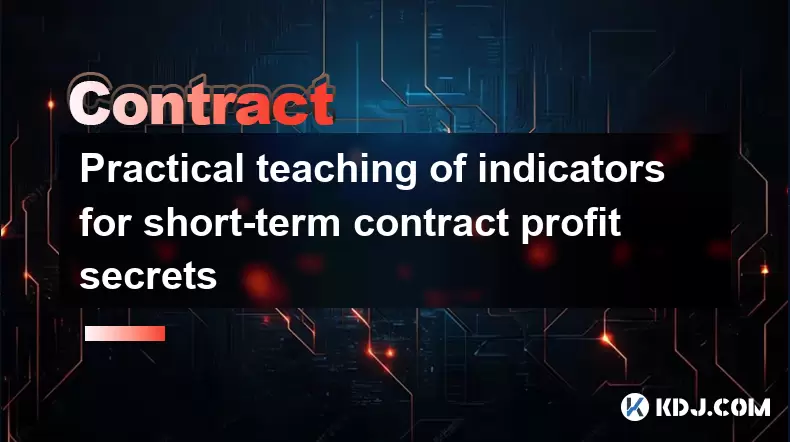
Introduction to Short-term Contract Trading
Short-term contract trading in the cryptocurrency market involves buying and selling contracts within a short period, often within hours or days. The primary goal is to capitalize on small price movements to generate profits. Successful short-term trading relies heavily on the use of technical indicators, which help traders identify potential entry and exit points. In this article, we will delve into the practical teaching of indicators that can unlock the secrets to short-term contract profits.
Understanding Key Technical Indicators
Technical indicators are mathematical calculations based on the price, volume, or open interest of a security or contract. They help traders make informed decisions by providing insights into market trends and potential reversals. Some of the most commonly used indicators for short-term contract trading include Moving Averages, Relative Strength Index (RSI), and Bollinger Bands.
Moving Averages (MA): Moving averages smooth out price data to form a single flowing line, making it easier to identify the direction of the trend. There are two types of moving averages: Simple Moving Average (SMA) and Exponential Moving Average (EMA). SMA gives equal weight to all prices, while EMA places more weight on recent prices.
Relative Strength Index (RSI): RSI is a momentum oscillator that measures the speed and change of price movements. It ranges from 0 to 100 and is typically used to identify overbought or oversold conditions. An RSI above 70 indicates overbought conditions, while an RSI below 30 suggests oversold conditions.
Bollinger Bands: Bollinger Bands consist of a middle band being an N-period simple moving average, an upper band at K times an N-period standard deviation above the middle band, and a lower band at K times an N-period standard deviation below the middle band. Bollinger Bands help traders identify potential breakouts and reversals.
Practical Application of Moving Averages
To effectively use moving averages for short-term contract trading, traders need to understand how to apply them in real-time scenarios. Here's a step-by-step guide on how to use moving averages:
Select the Time Frame: Choose a time frame that aligns with your trading strategy. For short-term trading, 5-minute, 15-minute, or 1-hour charts are commonly used.
Add Moving Averages: On your chosen chart, add two moving averages. A common strategy is to use a short-term moving average (e.g., 9-period EMA) and a long-term moving average (e.g., 21-period SMA).
Identify Crossovers: Look for crossovers between the short-term and long-term moving averages. A bullish crossover occurs when the short-term MA crosses above the long-term MA, signaling a potential buy opportunity. Conversely, a bearish crossover happens when the short-term MA crosses below the long-term MA, indicating a potential sell opportunity.
Confirm with Price Action: Before entering a trade based on a crossover, confirm the signal with price action. For example, ensure that the price is respecting the moving averages and that there is a clear trend in the direction of the crossover.
Utilizing the Relative Strength Index (RSI)
The RSI is a powerful tool for identifying overbought and oversold conditions in the market. Here's how to use RSI for short-term contract trading:
Set Up RSI: On your chosen time frame, add the RSI indicator. The default setting is typically 14 periods, but you can adjust it based on your trading style.
Monitor RSI Levels: Watch for RSI levels above 70 (overbought) and below 30 (oversold). These levels can signal potential reversal points.
Identify Divergences: Look for divergences between the RSI and price action. A bullish divergence occurs when the price makes a lower low, but the RSI makes a higher low, suggesting a potential reversal to the upside. A bearish divergence happens when the price makes a higher high, but the RSI makes a lower high, indicating a potential reversal to the downside.
Combine with Other Indicators: For a more robust trading strategy, combine RSI signals with other indicators like moving averages. For example, if the RSI indicates an oversold condition and the short-term MA crosses above the long-term MA, it could be a strong buy signal.
Leveraging Bollinger Bands for Short-term Trading
Bollinger Bands are particularly useful for identifying volatility and potential breakouts. Here's how to use them effectively:
Set Up Bollinger Bands: Add Bollinger Bands to your chosen time frame. The default settings are typically a 20-period SMA and 2 standard deviations.
Identify Squeezes: A Bollinger Band squeeze occurs when the bands come close together, indicating low volatility. This often precedes a period of high volatility and potential breakouts.
Watch for Breakouts: Look for price breakouts above the upper band or below the lower band. A breakout above the upper band could signal a strong upward move, while a breakout below the lower band might indicate a strong downward move.
Confirm with Volume: For a more reliable signal, confirm breakouts with volume. A breakout accompanied by high volume is more likely to be sustained.
Combine with Other Indicators: Use Bollinger Bands in conjunction with other indicators like RSI or moving averages. For example, if the price breaks above the upper Bollinger Band and the RSI is not overbought, it could be a strong buy signal.
Integrating Multiple Indicators for Enhanced Decision Making
While each indicator can provide valuable insights on its own, combining multiple indicators can enhance your decision-making process. Here's how to integrate moving averages, RSI, and Bollinger Bands for short-term contract trading:
Align Signals: Look for instances where the signals from different indicators align. For example, if the short-term MA crosses above the long-term MA, the RSI is not overbought, and the price breaks above the upper Bollinger Band, it could be a strong buy signal.
Avoid Conflicting Signals: Be cautious of conflicting signals. For example, if the RSI indicates an overbought condition, but the short-term MA just crossed above the long-term MA, it might be wise to wait for more confirmation before entering a trade.
Backtest Your Strategy: Before applying a multi-indicator strategy to live trading, backtest it on historical data to ensure its effectiveness. This will help you refine your approach and increase your confidence in the strategy.
Adjust to Market Conditions: Be flexible and adjust your strategy based on current market conditions. What works in a trending market might not work in a ranging market, so stay adaptable and continuously monitor your indicators.
Frequently Asked Questions
Q: Can these indicators be used for long-term trading as well?
A: While the indicators discussed in this article are particularly useful for short-term trading, they can also be applied to long-term trading. However, the time frames and settings may need to be adjusted. For example, longer time frames like daily or weekly charts and longer periods for moving averages and RSI might be more suitable for long-term trading.
Q: How can I avoid false signals when using these indicators?
A: False signals are a common challenge in trading. To minimize them, use multiple indicators to confirm signals, pay attention to volume, and consider the overall market context. Additionally, practicing good risk management and setting stop-loss orders can help mitigate the impact of false signals.
Q: Are there any other indicators that can be used for short-term contract trading?
A: Yes, there are many other indicators that can be used for short-term contract trading. Some popular ones include the Moving Average Convergence Divergence (MACD), Stochastic Oscillator, and the Average Directional Index (ADX). Each of these indicators provides unique insights and can be combined with the ones discussed in this article to create a more comprehensive trading strategy.
Q: How important is it to understand the underlying asset when using these indicators?
A: Understanding the underlying asset can significantly enhance your trading decisions. While technical indicators provide valuable insights into price movements, knowing the fundamentals of the cryptocurrency you are trading can help you better interpret the signals and make more informed decisions. For example, news events, market sentiment, and project developments can all impact the price of a cryptocurrency and should be considered alongside technical analysis.
Disclaimer:info@kdj.com
The information provided is not trading advice. kdj.com does not assume any responsibility for any investments made based on the information provided in this article. Cryptocurrencies are highly volatile and it is highly recommended that you invest with caution after thorough research!
If you believe that the content used on this website infringes your copyright, please contact us immediately (info@kdj.com) and we will delete it promptly.
- Uniswap’s UNI Price Gains Traction
- 2025-06-14 15:40:12
- CoinShares Has Officially Registered a Solana ETF in Delaware Today
- 2025-06-14 15:40:12
- Pump.fun has once again offloaded a significant tranche of SOL
- 2025-06-14 15:35:12
- Midnight Protocol Aims to Transform Cardano: Charles Hoskinson reveals plans to connect Cardano, Bitcoin, and other chains via secure, cross-chain DeFi.
- 2025-06-14 15:35:12
- BitMart Exchange Lists NPCS AI (XNPCS) Tokenizing Next-Generation Analytics on the Solana Blockchain
- 2025-06-14 15:30:12
- Should Apple Buy Bitcoin? Michael Saylor Thinks So
- 2025-06-14 15:30:12
Related knowledge
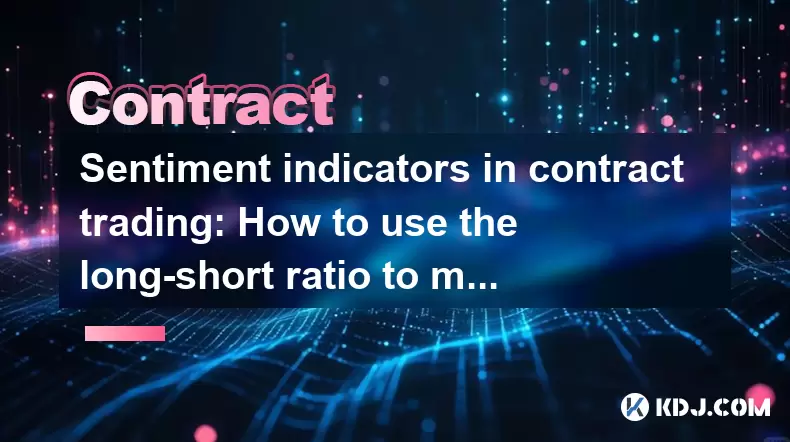
Sentiment indicators in contract trading: How to use the long-short ratio to make decisions?
Jun 14,2025 at 07:00am
What Are Sentiment Indicators in Contract Trading?In the realm of cryptocurrency contract trading, sentiment indicators play a crucial role in gauging market psychology. These tools help traders understand whether the market is dominated by bullish or bearish expectations. Among these indicators, the long-short ratio stands out as one of the most tellin...
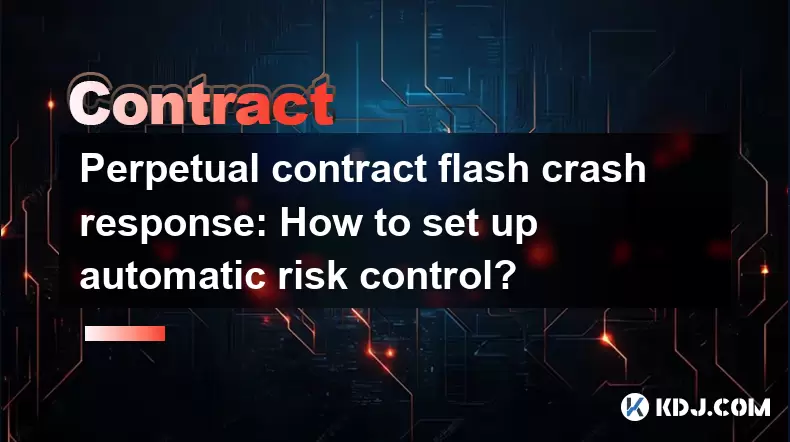
Perpetual contract flash crash response: How to set up automatic risk control?
Jun 13,2025 at 06:28pm
Understanding Perpetual Contract Flash CrashesA flash crash in the context of perpetual contracts refers to a sudden, sharp, and often short-lived drop or spike in price due to high volatility, thin order books, or algorithmic trading activities. These events can lead to massive liquidations across long or short positions on trading platforms. Traders m...
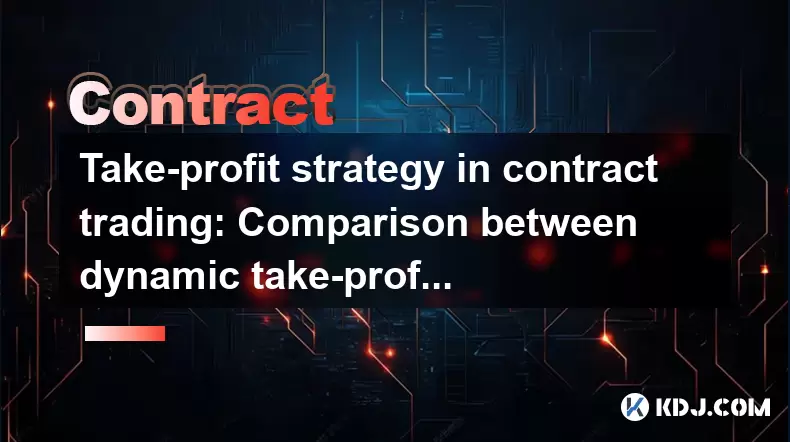
Take-profit strategy in contract trading: Comparison between dynamic take-profit and fixed take-profit
Jun 14,2025 at 07:08am
What Is Take-profit in Contract Trading?In the realm of cryptocurrency contract trading, take-profit refers to a predefined price level at which a trader automatically closes a profitable position. This mechanism is essential for risk management and profit locking. Traders use take-profit orders to ensure they secure gains without being swayed by emotio...
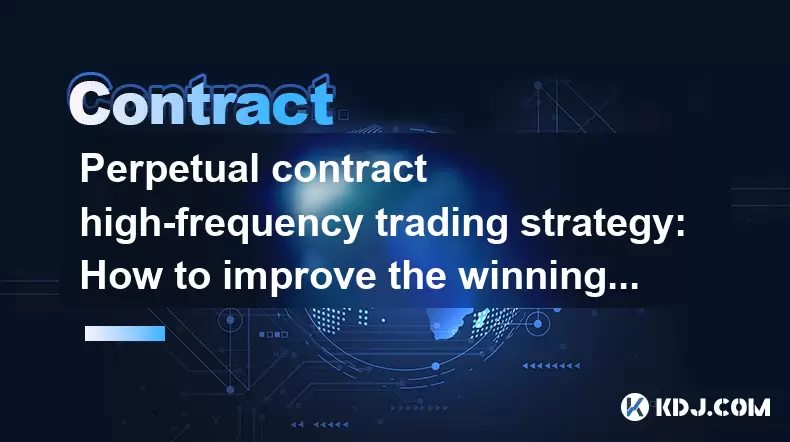
Perpetual contract high-frequency trading strategy: How to improve the winning rate of short-term brushing?
Jun 13,2025 at 04:14pm
Understanding the Basics of Perpetual ContractsPerpetual contracts are derivative financial instruments that allow traders to speculate on the price movement of an asset without owning it. Unlike traditional futures, perpetual contracts have no expiration date, making them ideal for short-term trading strategies like high-frequency trading (HFT). In the...
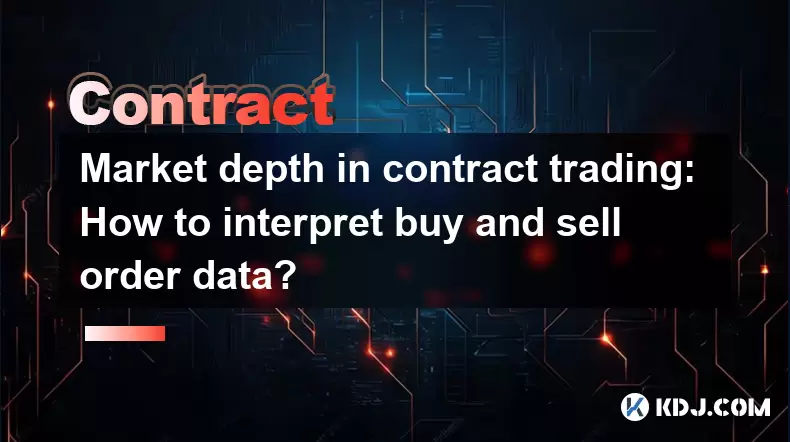
Market depth in contract trading: How to interpret buy and sell order data?
Jun 14,2025 at 02:57pm
Understanding Market Depth in Contract TradingMarket depth, often referred to as the order book depth, is a crucial concept in contract trading, especially within cryptocurrency markets. It represents the total number of buy and sell orders at various price levels for a specific asset. This data provides traders with insight into market liquidity, poten...
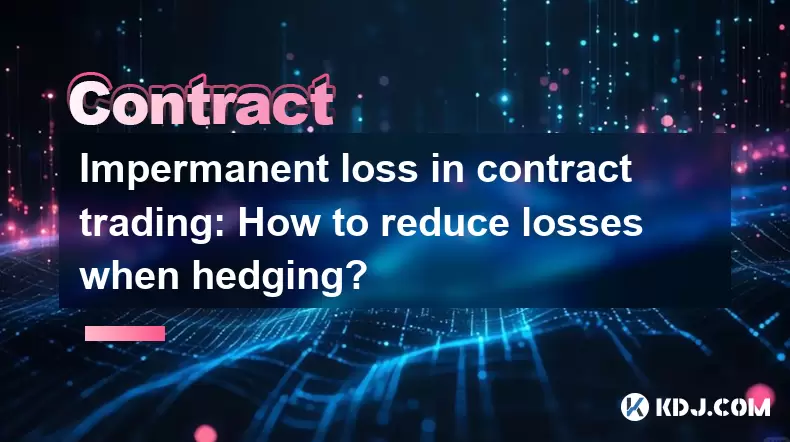
Impermanent loss in contract trading: How to reduce losses when hedging?
Jun 14,2025 at 10:49am
Understanding Impermanent Loss in Contract TradingImpermanent loss is a term commonly associated with liquidity provision in decentralized finance (DeFi), but it also plays a significant role in contract trading, especially when traders hedge their positions. In the context of contract trading, impermanent loss occurs when a trader opens both long and s...

Sentiment indicators in contract trading: How to use the long-short ratio to make decisions?
Jun 14,2025 at 07:00am
What Are Sentiment Indicators in Contract Trading?In the realm of cryptocurrency contract trading, sentiment indicators play a crucial role in gauging market psychology. These tools help traders understand whether the market is dominated by bullish or bearish expectations. Among these indicators, the long-short ratio stands out as one of the most tellin...

Perpetual contract flash crash response: How to set up automatic risk control?
Jun 13,2025 at 06:28pm
Understanding Perpetual Contract Flash CrashesA flash crash in the context of perpetual contracts refers to a sudden, sharp, and often short-lived drop or spike in price due to high volatility, thin order books, or algorithmic trading activities. These events can lead to massive liquidations across long or short positions on trading platforms. Traders m...

Take-profit strategy in contract trading: Comparison between dynamic take-profit and fixed take-profit
Jun 14,2025 at 07:08am
What Is Take-profit in Contract Trading?In the realm of cryptocurrency contract trading, take-profit refers to a predefined price level at which a trader automatically closes a profitable position. This mechanism is essential for risk management and profit locking. Traders use take-profit orders to ensure they secure gains without being swayed by emotio...

Perpetual contract high-frequency trading strategy: How to improve the winning rate of short-term brushing?
Jun 13,2025 at 04:14pm
Understanding the Basics of Perpetual ContractsPerpetual contracts are derivative financial instruments that allow traders to speculate on the price movement of an asset without owning it. Unlike traditional futures, perpetual contracts have no expiration date, making them ideal for short-term trading strategies like high-frequency trading (HFT). In the...

Market depth in contract trading: How to interpret buy and sell order data?
Jun 14,2025 at 02:57pm
Understanding Market Depth in Contract TradingMarket depth, often referred to as the order book depth, is a crucial concept in contract trading, especially within cryptocurrency markets. It represents the total number of buy and sell orders at various price levels for a specific asset. This data provides traders with insight into market liquidity, poten...

Impermanent loss in contract trading: How to reduce losses when hedging?
Jun 14,2025 at 10:49am
Understanding Impermanent Loss in Contract TradingImpermanent loss is a term commonly associated with liquidity provision in decentralized finance (DeFi), but it also plays a significant role in contract trading, especially when traders hedge their positions. In the context of contract trading, impermanent loss occurs when a trader opens both long and s...
See all articles

























































































